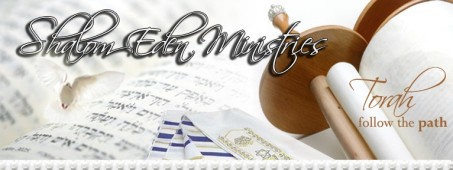BIBLE STUDY LESSON 11
SAUL’S DEATH
THE DEATH OF KING SAUL
From 1 Samuel 31; 2 Samuel 4:4; 1 Chronicles 10
“The time of battle came and the Philistine army closed in on the army of Israel. The Israelites were terrified and fled from the Philistines, for they were being slaughtered in great numbers on Mount Gilboa. When the Philistines recognized Saul and his sons, they caught up with them and killed Saul’s sons Jonathan, Abinidab and Malchishua. The archers pursued Saul and wounded him badly. ‘Draw your sword and kill me,’ Saul ordered his armour bearer. ‘If you do not, these ungodly Philistines will capture me and torture me to death.’ But the armour bearer could not kill Saul, for the thought of killing his king went against him. Saul then took his own sword and fell upon it so that it pierced through him. When the armour bearer realized that Saul was dead, he also fell on his sword and died. Thus Saul died that day with his three sons, his armour bearer and many of his soldiers. As soon as the Israelites at the other end of the valley and those across the Jordan River heard that the army had run away and that King Saul and his sons were dead, they fled from their cities and the Philistines came and occupied them.
When morning came, the Philistines went out to the battlefield to strip the dead of their valuables. They found Saul and his three sons dead on Mount Gilboa. They cut off his head, took off his armour and sent messages to report his death throughout their land, especially in their temples. They put his armour in the temple of Ashtaroth and fastened his body to the wall at Beth-Shan. When the people of Jabesh-gilead heard what had happened, some of their brave warriors went by night and took the bodies of Saul and his sons from the wall of Beth-Shan, brought them to Jabesh and burned them there. Then they buried their bones under a tree at Jabesh and fasted for seven days. Thus Saul died because of his disobedience to the Lord and because he looked for direction from a medium instead of from the Lord. That is why the Lord let him be killed and gave his kingdom to David the son of Jesse. The news of the death of Saul and Jonathan soon reached the capital from Jezreel. When the nurse who took care of Jonathan’s five-year-old son Mephibosheth heard what had happened, she grabbed the child and ran away. In her haste she stumbled and fell, dropping the child. Mephibosheth became a permanent cripple because of this accident.
COMMENTARY
BETH-SHAN AND THE TEMPLE OF ASHTAROTH
More than three thousand years before Christ the first settlers were attracted to the site of Beth-Shan by its location and rich natural resources. Situated at a major crossroads on the eastern edge of the Jezreel valley, it controlled the entrance to the fertile northern lowlands. The rich soil and plentiful water supported the city’s rapidly growing population. The original mud-brick village was soon replaced by a larger city of stone. As generation followed generation, Beth-Shan was rebuilt many times. Today its history is preserved by eighteen layers of rubble that stand more than thirty stories high. Archaeologists have uncovered impressive ruins from the years of Beth-Shan’s Egyptian domination. The remains of earlier generations are dwarfed by the huge city wall and the large temple district built by the Egyptian pharaohs. During the reign of Ramses III (1198-1166 B.C.), a double-temple complex was erected in the city’s sacred district. Long after Egyptian power had been replaced by Philistine control, the twin temples continued in use. They still dominated the city’s high point when King Saul’s reign came to its tragic end. The Philistines dedicated the southern half of the double-temple complex to Dagon, their grain god. His shrine was connected to the northern half, which was dedicated to Ashtaroth, the goddess of fertility. Ashtaroth’s worshipers offered sacrifices to the goddess in vessels adorned with sacred doves and snakes. After Saul’s death on the battlefield of Gilboa, the Philistines placed the king’s weapons among these sacred vessels as a triumphant offering to Ashtaroth.
TEST YOURSELF
1.) Whom did Saul ask to kill him?
A) A Philistine
B) His son
C) An Amalekite
D) His armour-bearer
2.) Who rescued the bodies of Saul and his sons?
A) Warriors from Jabesh-Gilead
B) A Philistine cohort
C) David
D) A pair of the sons of Anak
3.) What was Jonathan’s son’s name?
A) Korath
B) Jonadab
C) Nabal
D) Mephibosheth
4.) Which valley was Beth-Shan in?
A) Melotha
B) Nazareth
C) Jezreel
D) Judea
5.) What was special about the city of Beth-Shan?
A) A large waterfall in the middle of the city
B) An altar the size of a small house
C) A double-temple complex
D) A large obelisk with historic records on them
6.) Which Philistine gods were worshipped in Beth-Shan?
A) Dagon and Ashtaroth
B) Dagon and Hermes
C) Ashtaroth and Apophis
D) Baal and Ashtaroth |
